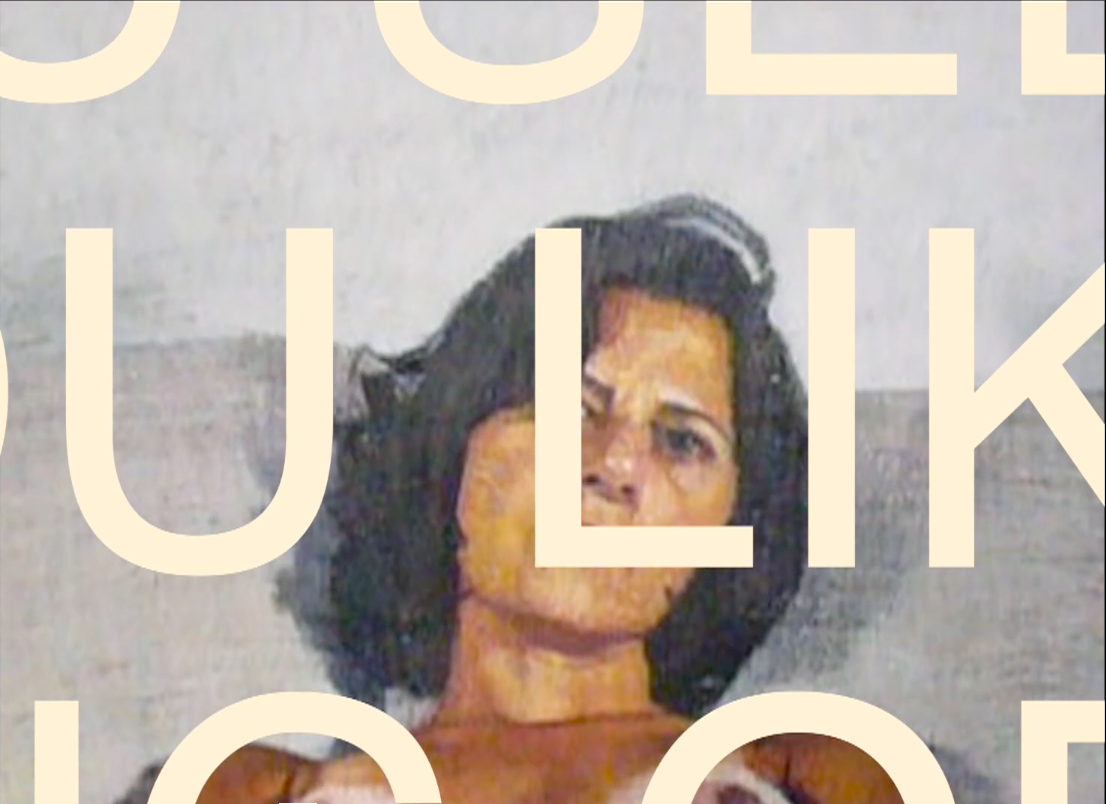Stabat Mater
2021
Single-channel digital video 4/3 color, sound, 5:08 min. Voice over: Bernardo Siciliano, Anna Siciliano. Music: Giovanni Pergolesi, Stabat Mater, 1736. First mouvement: Stabat Mater Dolorosa. London Symphony Orchestra conducted by Claudio Abbado soprano: Margaret Marshall, contralto Lucia Valentini-Terrani organ Leslie Pearson. Deutsche Grammophon, 1986 recording. Editing: Dado Carillo, Marina Sagona. Post Production: Mediakite, NYC.
Stabat Mater confronts the topics of motherhood, separation and loss. It is built upon the repetition, for fifteen times, of an eighteen seconds film. The nude portrait of the woman, the artist herself, shown in the film is a painting by the artist’s former husband. The audio of the film is the mix of a dialogue in Italian, between the artist’s daughter and the artist’s former husband, with the first movement of Giovanni Pergolesi’s Stabat Mater. The text of the Italian dialogue translated into English is superimposed over the footage in a gigantic sized type which grows smaller with each repetition until it disappears, while the voices subside and the music takes over.
Poet Zachary Schomburg juror’s statement for Cadence Video Poetry Festival Award:
“Stabat Mater is a deeply simple and moving poem-film that stares right into the profound loss brought on by a refracted, reframed and repeated self-gaze. 15 times, the camera retreats —instead of moving toward, significantly —from a captured private moment of intimacy and desire into the world outside of the painting, which is one of gaze, questioning, judgment, reckoning. It reframes and refracts that moment, a memory, in 15 new ways. If Mary’s suffering of her son’s crucifixion is to be found in the film, it’s not a suffering that can just be found in the moment of the painting, but a suffering in the looking back at the moment, captured presumably first in a photograph, then in a painting, then a moment on the family’s video camera, then as found footage for this film. With each of the 15 retreats, there’s a new opportunity to re-read new meaning from the woman’s expression—desire, loneliness, boredom, trauma.The conversation between the ex and their daughter is the film’s only poetic text, a foundpoem, that slowly gets smaller, obscures less of (or differently) the woman’s body—another kind of retreat. Because the conversation is removed from its larger context, the pronoun “they” in the last line has no obvious reference, leaving us to consider multiple paintings, maybe in a series,or something else. Who or what is they? And why would they bethrown away? It reminds us that when a thing takes so much time to become itself—a long relationship, a realist painting, a savior —there’s that more suffering when it’s thrown away. It’s really the “why” of that last question that haunts, and question that has no answer, other than to be asked ad infinitum.”

